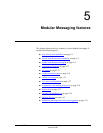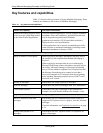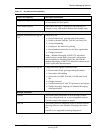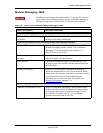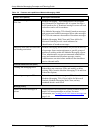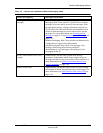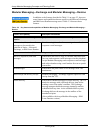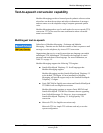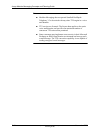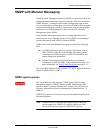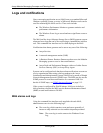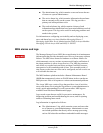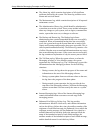
Avaya Modular Messaging Concepts and Planning Guide
5-8 November 2004
Avaya Modular Messaging Concepts and
Planning Guide
Modular Messaging—Exchange and Modular Messaging—Domino
In addition to the features described in Table 5-1 on page 5-2, there are
some features and capabilities that are specific to the Microsoft Exchange
and IBM Lotus Domino message stores. Table 5-3 discusses these
features.
Table 5-3. Key features and capabilities of Modular Messaging—Exchange and Modular Messaging—
Domino
Feature and capability Description and benefits
Voice, fax, and e-mail messages in a single platform of choice - Microsoft Exchange or IBM Lotus
Domino
Allows voice, fax, and e-mail
messages to be stored in the
platform of choice – Microsoft
Exchange, or IBM Lotus Domino.
Provides a single interface for accessing voicemail and
corporate e-mail messages.
Telephone user interface (TUI) for accessing, sending, and composing messages
Receive, respond to, and send
messages
Subscribers can receive, reply to, forward, and send voice,
fax, text, and corporate e-mail messages over the telephone.
Avaya Modular Messaging reads corporate e-mail messages
and subject headers using e-mail readers for text-to-speech
conversion.
Print messages Subscribers can print e-mail or fax messages with TIFF
attachments.
Read receipt and delivery receipt Modular Messaging—Exchange supports request for read
receipt from the TUI.
Future delivery Subscribers schedule messages for future delivery. The TUI
marks the message with a deferred delivery time before
sending it out of the sender’s mailbox. The Exchange
message transport holds the message internally until the
scheduled delivery time. At the scheduled delivery time,
Exchange delivers the message in the mailbox of the
intended recipient.
(Not available with Avaya Modular Messaging—IBM
Lotus Domino version).




